
Wireless security cameras transmit video and audio over a wireless connection, typically using Wi-Fi, Bluetooth, or cellular data. Convenient because they can be placed anywhere in your home or office without the need for cables or a power outlet nearby. Easy to install, simply mount them to a wall or ceiling and connect them to your home network.
Coming in a variety of shapes and sizes, and wireless security cameras can be used for a variety of purposes, such as monitoring the front door, keeping an eye on the kids or pets, or watching over a business. Key features like motion detection, night vision, and two-way audio, which allows you to communicate with people via the camera are items to evaluate when choosing your camera.
When choosing a wireless security camera, you should think about the location where you want to install the camera and whether it will be exposed to the elements. You should also consider the resolution of the camera and whether it has a wide viewing angle. Everyone has different needs so consider the features that are most important to you, such as motion detection or two-way audio for example.
Our Top IP Cameras
When buying a wireless security camera there are many things you should consider. We looked at the following in determining which items to include on our list.
- Resolution and Image Quality
- Night Vision Capabilities
- Motion Detection and Alerts
- Storage Options (cloud or local)
- Two-Way Audio
- Compatibility with other smart home devices
- Ease of Installation and Setup
- Mobile App Functionality
- Privacy Settings
- Cost
- Vender Reputation
Arlo Essential Spotlight Camera
This model has been available since 2020 is a full featured security camera. Arlo prides itself on providing quality camera's that will help keep you and your family safe.
Features:
- See faces or license plates in full color at night, with color night vision.
- Certified and tested to withstand the toughest conditions in heat, cold, rain, or sun.
- Works as an Amazon Alexa device, Google device, Apple HomeKit device and Samsung SmartThings device.
- Features a130 Degree Viewing Angle and 12x zoom.
- Two-way Talk - Easily used as a baby monitor with camera and audio, nanny cam, and pet camera.
- Connect directly to your Wi-Fi for fast, wire-free installation with no hub required.
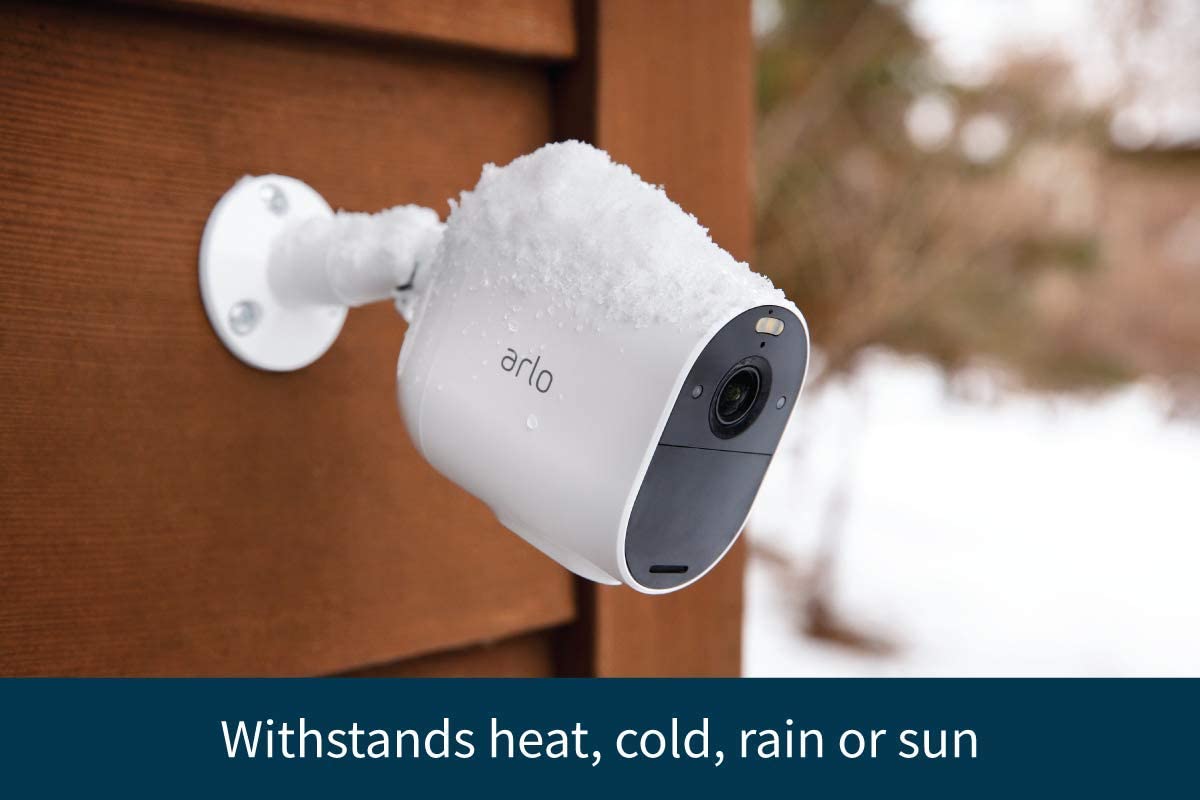
Pros
Cons
The Arlo cameras are as advertised, except for the battery life. If you decide to go with these cameras and you have a lot of activity around the camera you should consider going with the solar option.
Not having to deal with a hub was a benefit, however it should be noted that if you are not going to pay for cloud storage you will lose the ability to store footage which is a deal breaker for some people.
All-in-all if you're willing to pay for the subscription these cameras worked very well, and the install process was simple earning this camera on our list of top cameras.
Google Nest Cam Outdoor or Indoor
The Google Nest cam is a well-designed system and the build quality is competitive with all the models we've compared. Our only beef is the lack of a more affordable subscription that only keeps a few days. The options available for history feel like overkill for the average consumer.
Features:
- Build-in Intelligence to determine difference between animal, human, objects.
- 1080p HDR Video with night vision capability.
- Never miss activity if Wi-Fi goes down, Nest Cam will store up to an hour of recorded events.
- Magnetic mount makes installation effortless.
- Nest Cam requires the Google Home app and a Google Account (free)
- Talk and listen with the built-in speaker and microphone.
- If purchased separately you have the ability to add a weatherproof power cable or indoor stand with a power cable.
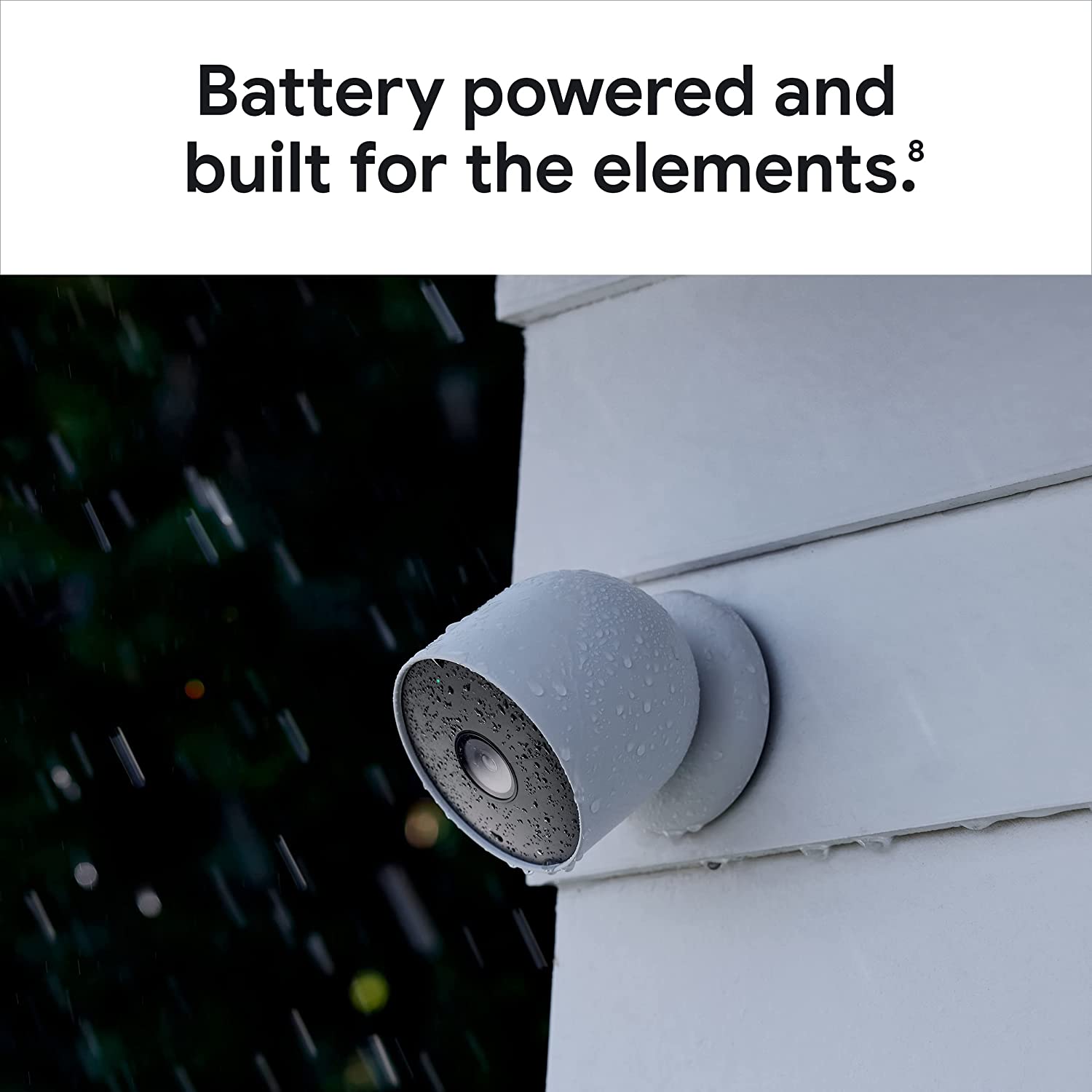
Pros
Cons
Coming in a little more expensive (at this writing) than the Arlo cameras, You the added option of being able to purchase the components to go with a hardwired installation. Arlo did not offer this option.
The upgrades for facial recognition and the longer battery life are clear pluses for these cameras. However, if sharper picture and night vision are a big deal for your purposes, this is where the 2nd generation google cameras come up a little short.
We do believe with Google (and its deep pockets), the software will continue to improve, and any short comings have a high probability of being resolved with each software release.
This setup is pretty good overall, but the fees and cameras are a little on the pricey side.
Ring Spotlight Cam Battery HD Security Camera
If you already have a Ring Doorbell, you love the fact that you can easily integrate Ring cameras with your doorbell.
Features:
- See, hear and speak to visitors from your phone, tablet and PC.
- Quick-release rechargeable battery pack.
- Lifetime Theft Protection.
- 1080HD video with infrared night vision.
- Built-in LED light strips and a siren.
- Customizable motion zones.
- With Subscription you can view historical data up to 180 days.
- Easy Installation
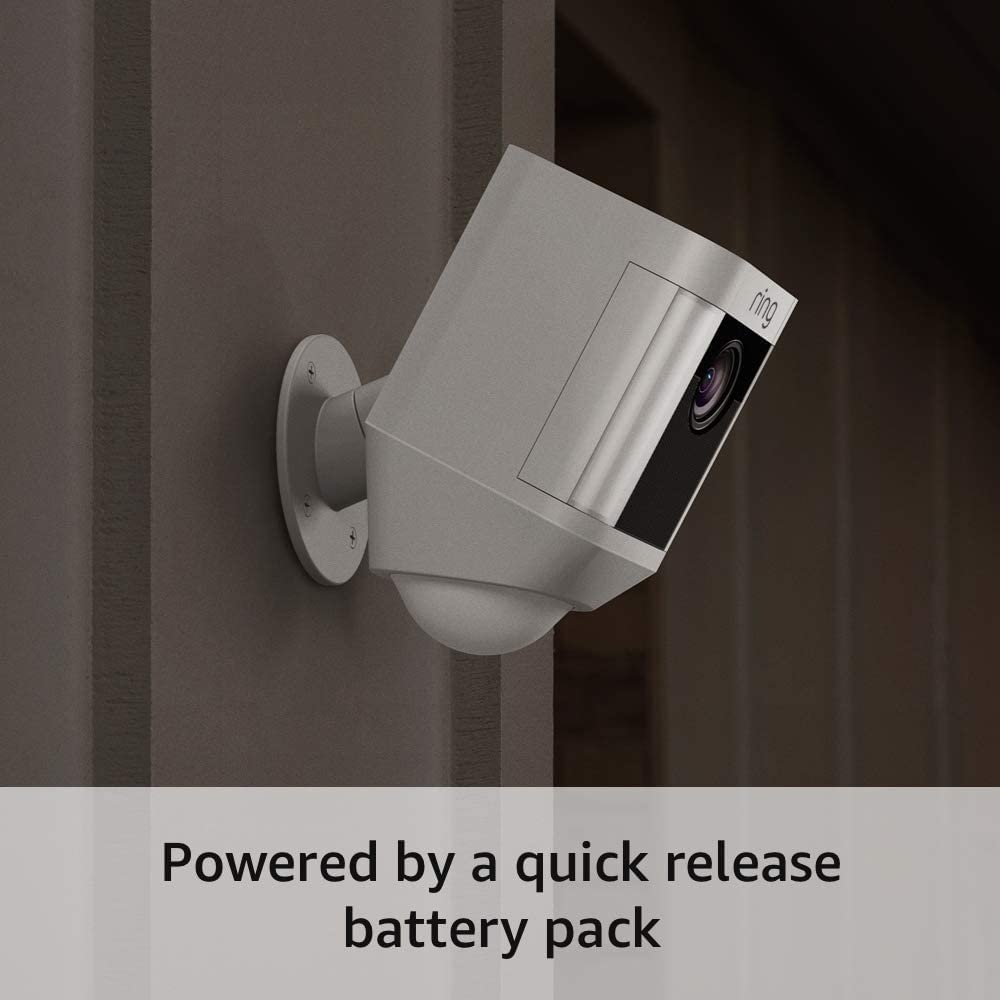
Pros
Cons
Ring is probably one of the more well-known brands and they are the company that made doorbell cameras mainstream.
In our testing we found that the Ring Cameras easily expanded any pre-existing Ring devices you may have. And for this reason, if you've already invested in Ring it might make sense to purchase Ring cameras as your needs expand.
The lifetime replacement for stolen cameras and the spotlight are also nice features.
For our money we liked other setups better, but if you are expanding an existing Ring setup this will work fine.
Blink Outdoor - wireless, weather-resistant HD security camera
Blink cameras are durable and have a sleek design. They are one of our favorites on the list of top wireless IP cameras.
Features:
- Can monitor your home day or night with infrared night vision.
- Outdoor runs for up to two years on two AA lithium batteries.
- Durable as it has been built to withstand the elements.
- No wiring, no professional installation required.
- Communicate via the camera with live view in real time and two-way audio features.
- Works with Alexa.
- Cloud Storage Available with Subscription.
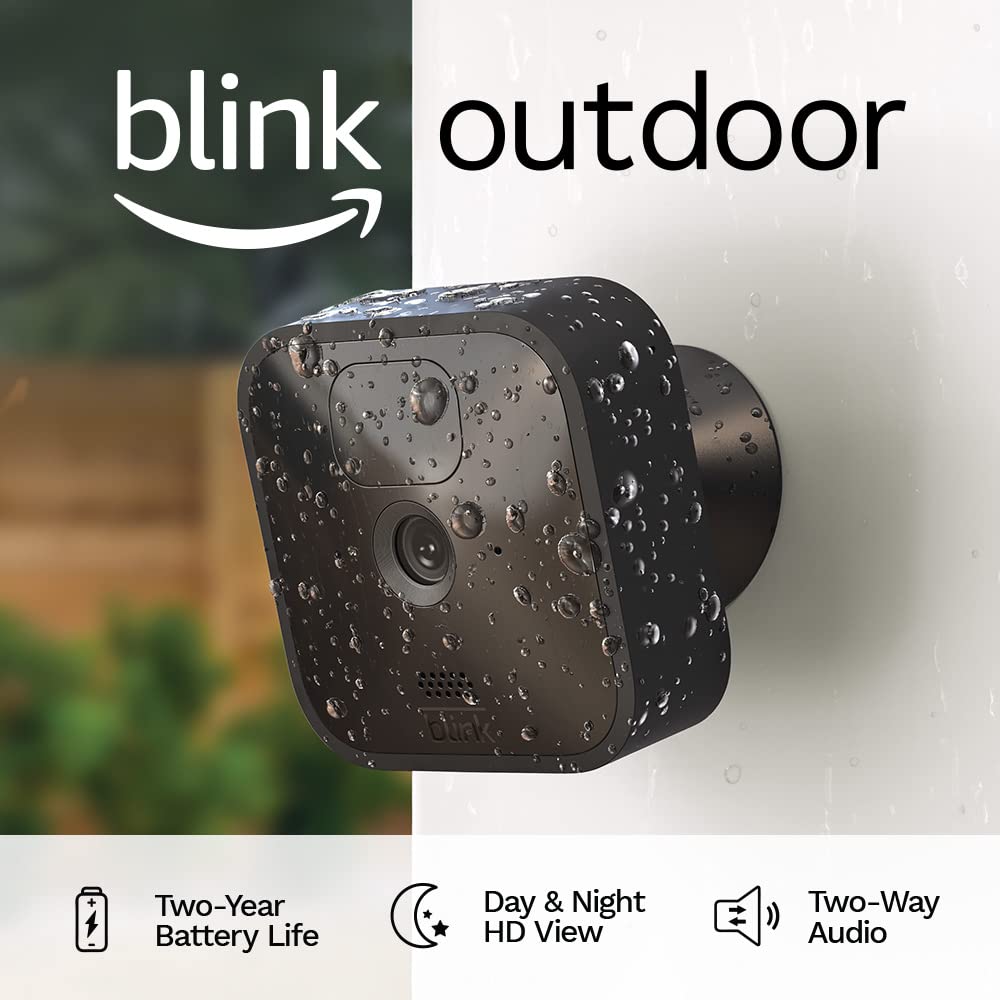
Pros
Cons
Blink's new Outdoor cameras have a lot going for them. The biggest shortcoming is the local storage. It should be noted that if it weren't advertised as local storage, we wouldn't be calling it out. However, since Blink tout's it as having local storage, we hope they get the thumb drive figured out in future releases.
Setup is a breeze on these cameras and the Wi-Fi range presented no surprises (although it should be noted we were using a more current Wi-Fi setup.
So far, we haven't had an issue with the batteries, but it is important to note that the battery life claims are based on using 720p settings. Your mileage may vary on battery life depending on your setup choices.
Overall, this setup is one of the better options for the money.
Lorex Home Security Cameras – 4K Spotlight Indoor & Outdoor
Although not the cheapest option for a security camera, the video quality and features of the Lorex solution is a viable option for home security.
Features:
- Fantastic video quality and digital zoom featuring 4K Resolution
- Faster data transmission with Wi-Fi 6
- Supports both color night vision and Infra-Red (IR) night vision.
- Smart Motion Detection Plus easily detects between a person, vehicle, animal, or package making your alerts more meaningful
- Two-way audio communication features.
- Includes an LED warning light and remotely triggered exterior siren.
- Private local storage with the included 32GB MicroSD (upgradable to 256GB)
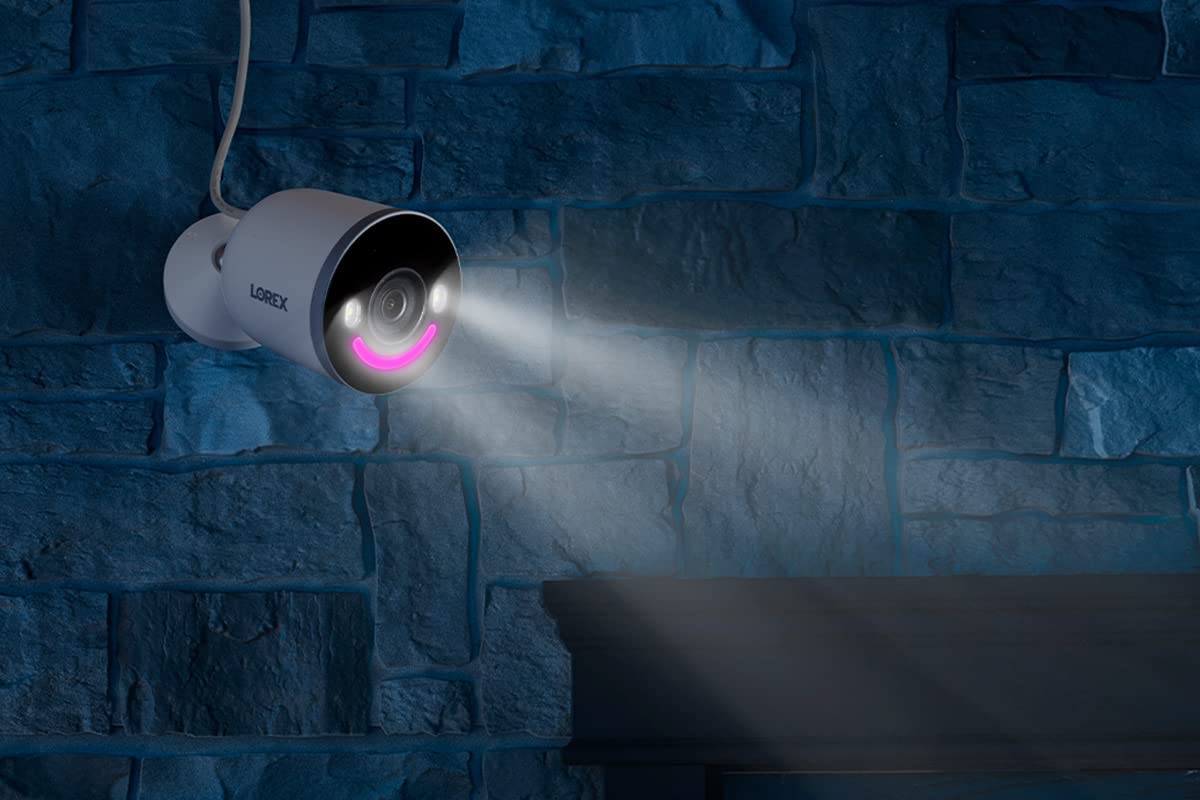
Pros
Cons
We liked this camera for its solid build and the fact that it didn't require batteries for its power source. You'll notice the theme of most of the wireless cameras we reviewed is that the battery life was usually less than advertised.
For those that don't want to hassle with changing batteries, and you have a power source close by this camera provides and greatly alternative to the battery powered options.
We also liked how a subscription is not needed and that the camera uses the local SD card to record images and they can be viewed from the app and a browser.
While this camera is a little pricey, we feel it is a good option if you have a power source you can tap into close by to where you'll be setting up the camera. If you don't and require a battery powered camera, this would not be a good option for you.
Wireless Security Cameras FAQ
Common questions and information to help in choosing the correct Wireless Security Camera for you.
What are the Top Brands for Wireless Security Cameras?
There are many brands of wireless security cameras on the market, and the best one for you will depend on your specific needs and budget. Some of the top brands of wireless security cameras include:
- Arlo: Arlo is a well-known brand that offers a wide range of wireless security cameras for both indoor and outdoor use. Their cameras are known for their long battery life, motion detection, and two-way audio.
- Nest: Nest is a popular brand of smart home devices, including wireless security cameras. Their cameras are known for their sleek design and integration with other smart home devices.
- Ring: Ring is a brand that is known for its doorbell cameras, but they also offer a range of indoor and outdoor wireless security cameras. Their cameras are known for their two-way audio and integration with the Ring app and other smart home devices.
- Lorex: Lorex is a brand that offers a wide range of wireless security cameras for both residential and commercial use. Their cameras are known for their high-resolution video and advanced features like facial recognition.
- Blink: Blink is a brand that offers a range of affordable wireless security cameras for indoor and outdoor use. Their cameras are known for their long battery life and easy setup.
When choosing a wireless security camera, it's important to consider the features that are most important to you, such as resolution, motion detection, and two-way audio. You should also consider the location where you want to install the camera and whether it will be exposed to the elements. Finally, consider the cost and convenience of the camera, as well as its compatibility with any other smart home devices you may have.
How do Wireless Security Cameras Work?
Wireless security cameras work by transmitting video and audio over a wireless connection, such as Wi-Fi or cellular data. To set up a wireless security camera, you will need to connect it to a power source, such as a wall outlet or a battery, and connect it to your home network.
Once the camera is powered on and connected to your network, you can access it using a smartphone app or a web browser. You can view a live feed from the camera, as well as recordings of previous events. Some wireless security cameras also have features like motion detection, which can trigger an alert or recording when movement is detected, and two-way audio, which allows you to communicate with people through the camera.
Wireless security cameras are convenient because they can be placed anywhere in your home or office without the need for cables or a power outlet nearby. However, they can be vulnerable to interference or hacking, so it's important to choose a camera with strong encryption and to keep the camera's firmware and software up to date.
Do Wireless Security Cameras Need Internet?
Most wireless security cameras require an internet connection to transmit video and audio, as well as to receive instructions and notifications. Without an internet connection, a wireless security camera may not be able to transmit video or send alerts.
There are a few exceptions to this. Some wireless security cameras have the ability to store video locally on a microSD card or a connected hard drive, so you can still view recorded footage even if the camera is not connected to the internet. However, these cameras will not be able to transmit live video or receive instructions without an internet connection.
Wireless security cameras use a variety of technologies to transmit video and audio, including Wi-Fi, Bluetooth, and cellular data. If you want to use a wireless security camera without an internet connection, you may be able to use a camera that relies on cellular data or Bluetooth, although these options may be more expensive and may not offer the same level of performance as a camera that uses Wi-Fi.
It's important to note that an internet connection is not the same as a power source. While most wireless security cameras need to be plugged into an electrical outlet or powered by a battery, they do not necessarily need to be connected to the internet to function. However, without an internet connection, you may not be able to access the camera remotely or receive alerts.
How to Power Wireless Security Cameras
There are a few different ways to power a wireless security camera:
- Plugging into an outlet: Most wireless security cameras can be plugged into a wall outlet using a power adapter. This is the most common method of powering a wireless security camera, as it is convenient and reliable. However, it requires that the camera be located near an electrical outlet.
- Using a battery: Some wireless security cameras are battery-powered, which means they can be placed anywhere in your home or office without the need for a power outlet nearby. These cameras typically come with a rechargeable battery that can be charged using a power adapter.
- Using solar panels: Some wireless security cameras come with solar panels that can be used to power the camera. These cameras can be placed in areas where it is not practical to run a power cord, such as on a fence or in a tree.
- Using PoE (Power over Ethernet): Some wireless security cameras can be powered using PoE (Power over Ethernet), which allows them to receive power and data over a single Ethernet cable. This is a convenient option if you have a wired network connection nearby and want to avoid using a power adapter.
When choosing a power source for your wireless security camera, consider the location of the camera and whether it will be exposed to the elements. You should also consider the battery life of the camera and whether you will need to recharge the battery frequently. Finally, consider the cost and convenience of the power source.
Features and Tips for Wireless Security Cameras
How to Keep your Camera Secure?
Encryption: The camera should use strong encryption to protect the data that is transmitted between the camera and the Wi-Fi network. The most common encryption standard used for Wi-Fi networks is WPA2.
Password protection: The camera should require a strong, unique password to access its settings and footage. It's important to use a password that's difficult to guess, and to change it regularly.
Two-factor authentication: Many security cameras now support two-factor authentication, which adds an extra layer of security by requiring a code in addition to the password to log in to the camera.
Firmware updates: The camera's firmware should be regularly updated to address any security vulnerabilities that are discovered.
Remote access: If the camera can be accessed remotely, it should use secure protocols such as HTTPS or SSL to protect data transmitted between the camera and the remote viewer.
Privacy features: The camera should have privacy features such as a physical shutter or the ability to disable the camera's Wi-Fi connection when it's not needed.
Common Features to consider when looking at WiFi Security Cameras
High-definition video: Most Wi-Fi security cameras offer high-definition video, typically at 1080p or higher.
Night vision: Many cameras have infrared sensors that allow them to see in the dark, providing clear footage even in low-light conditions.
Motion detection: Wi-Fi security cameras can detect motion and send alerts to your smartphone or other device when activity is detected.
Two-way audio: Many cameras feature built-in microphones and speakers, allowing you to communicate with people on the other end of the camera.
Cloud storage: Some cameras offer cloud storage for your video footage, allowing you to access your recordings from anywhere.
Mobile app: Most Wi-Fi security cameras come with a mobile app that allows you to control the camera and view live or recorded footage from your smartphone or tablet.
Pan/tilt/zoom: Some cameras allow you to remotely control the camera's movements, enabling you to pan, tilt, and zoom to get a better view of your surroundings.
Smart home integration: Many Wi-Fi security cameras can integrate with popular smart home platforms like Amazon Alexa or Google Assistant, allowing you to control your camera using voice commands.
Local storage: Some cameras offer local storage options, such as an SD card, to store footage locally instead of relying on cloud storage.
